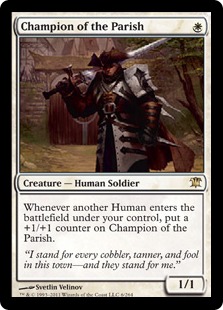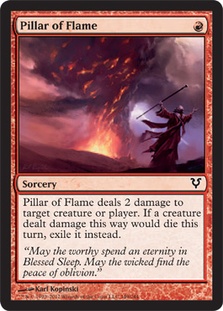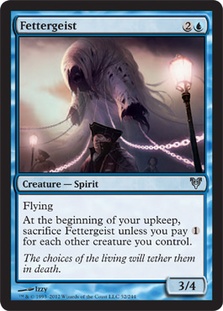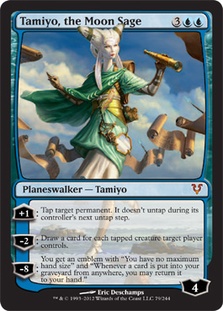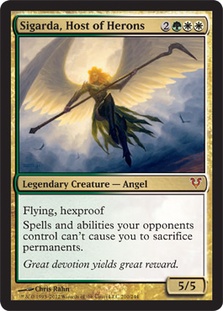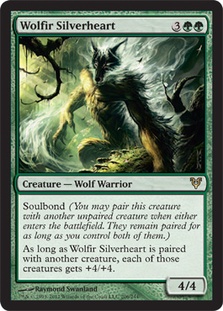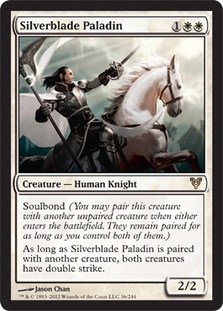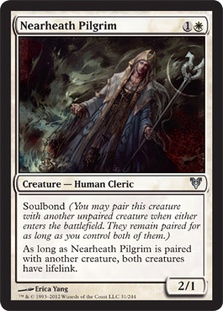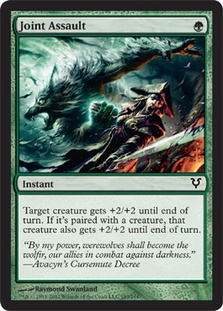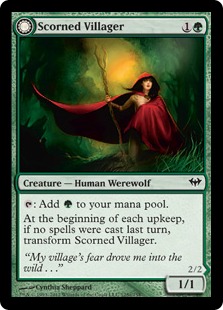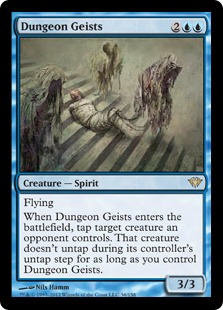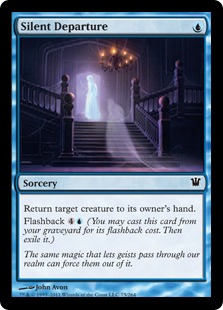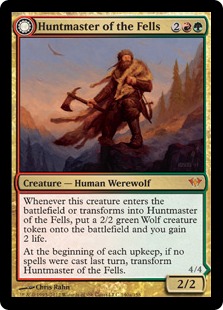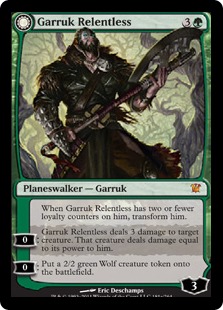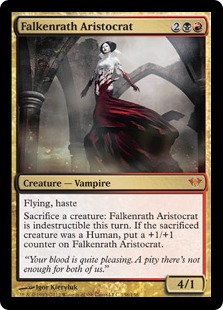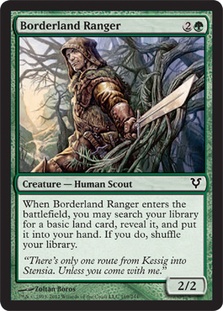Do you remember the last Pro Tour when there wasn’t a member of Team CFB in the Top 8? Besides Barcelona, I mean. Think about it.
If you haven’t been following the Pro Tour for very long, you probably can’t think of one because there hasn’t been one in two and a half years: Worlds 2009 in Rome. Given that the team really only started working together in San Diego in 2010, that means that there hasn’t been a Pro Tour without one of our testing team in the Top 8 for as long as the team existed.
Until now.
Not only did none of us make the Top 8 of Barcelona, none of us made the Top 16. None of us made the Top 25. In fact, the highest finisher on the team was Lukas Blohon in 27th place, with only two others joining him in the money at all and both of them—David Ochoa and Shuhei Nakamura—limping into the Top 50.
That wouldn’t be an exciting showing for any serious team. For one that hasn’t failed to put a member into the Top 8 since its inception—that took down first and second place at the previous tournament and a full half of the Top 8 at Worlds—it’s a monumental failure.
So what happened? I wrote last week on the eve of the Pro Tour about some of the problems in our playtesting, but since the article was to be published before the event I had to be cagey about the details. Now that everything is public, I can be a lot more open about the specifics and about the problems I didn’t even know we had then.
Going into the Pro Tour, we had an absolutely abysmal read on the metagame. It wasn’t just bad; it was atrocious. We were convinced that the most popular deck was going to be Boros, and we thought the field would be made up primarily of Champion of the Parish decks and decks built to beat Champion of the Parish. We expected to see a lot of RUG, Reanimator, and Jund, along with a smattering of aggressive and midrange green decks and a few oddball control decks. Nearly a full quarter of the Pro Tour played Naya midrange. Our testing gauntlet didn’t even have a Naya deck.
Well, that’s not quite accurate, because that implies that we had an actual gauntlet. Our "gauntlet" consisted of pretty much nothing but Boros and brews. We only had so many copies of Boros to go around, so the significant majority of our testing games were just one brew against another. If that doesn’t sound like good testing, it’s because it isn’t. Playing two decks against each other when you have no reasonable expectation of playing the matchup in the tournament is okay just to get a feel for how each of the decks plays out, but it’s hardly an efficient and practical way to spend testing time in the narrow window leading up to the Pro Tour.
Our expectation of the metagame—and, as a result, our gauntlet—didn’t even really change from day one. We thought Boros would be the most popular deck going in, and through all the results of our testing didn’t really bother to modify that hypothesis. We pretty much just accepted it as a forgone conclusion, despite the fact that all of our decks that we bothered to build with any thought given to the matchup were winning rather handily.
The first deck that anyone really liked was RUG, which wasn’t terribly surprising since it’s the sort of deck that much of the team likes to play. Thanks to the additions of Pillar of Flame, Fettergeist, and Tamiyo, the deck was much more powerful than the pre-Avacyn Restored version that was already having quite a bit of success on Magic Online. Fettergeist, in particular, gave the deck a completely different angle, giving it enough early pressure to make burning the opponent out quickly a reasonable plan. The new-school Serendib also happened to have the perfectly sized body to survive Brimstone Volley and block Hellrider, both of which seemed quite significant in the Boros-ridden world we anticipated.
The honeymoon with RUG didn’t last long, however. In fact, it ended quite abruptly once we started building green decks. We quickly found that both Sigarda and Wolfir Silverheart were almost completely unbeatable for RUG. The cheap damage based removal that made RUG so effective against Champion decks and so versatile against control could do very little against fat green creatures. Sure, RUG could win some games by chump blocking with Huntmaster tokens and winning with burn and fliers against Silverheart, but only if it was already pretty far ahead when the big bad Wolf came to play. The fact that Silverheart produced two huge creatures meant blocking was doubly difficult, and with one of them effectively having haste it was hard for the RUG player to plan ahead. An unassuming Borderland Ranger could suddenly become a huge threat once it teamed up with the Wolf.
As an aside, apparently the Japanese translation for soulbond is almost identical to their word for marriage. Throughout playtesting, Shuuhei would say, "Make relationship," every time he’d bond two creatures. Everyone else started emulating it over the course of the week, and as it became clear just how powerful Wolfir Silverheart was, I joked that I wanted to make a Facebook page for Wolfir Silverheart just so I could update its relationship status. Ultimately I was too busy and/or lazy to do so, but instead bought every Silverheart this here site had available for a cool $1.50 each. Less amusing, more profitable.
As we played more with Silverheart, it became clearer and clearer that we wanted to play it. EFro put together a G/W deck purely build around maximizing soulbond, including Silverblade Paladin, Nearheath Pilgrim, and even Joint Assault. Owen built a very linear Human tribal deck that topped out with four copies of Silverheart, while I experimented with different base green midrange decks (to the surprise of exactly no one).
If it’s anyone’s fault that we missed on Naya completely, it’s mine. I tried a number of Naya builds but was extremely hesitant about making them nearly as top heavy as the versions that showed up at the Pro Tour. As I mentioned earlier, throughout our testing we maintained the belief that Champion of the Parish decks would be enemy number one, so we expected people to be playing a lot of cheap removal spells. As a result, I didn’t want to stuff my deck full of four drops and rely on my Avacyn’s Pilgrims and Scorned Villagers living to be able to do anything in the first few turns of the game. Most of the decks that I built were more Strangleroot Geist / Wolfir Avenger decks, which made it much harder to get the Naya mana to work since you didn’t have any green dual lands in red and white.
Somehow, despite working on nothing but Silverheart decks for much of our time, we didn’t reach the conclusion that other people might also realize just how good the big bad Wolf really was. Sure, we abandoned RUG in large part due to its vulnerabilities to large green men, but we remained in the mindset that Silverheart was something we had discovered that other people wouldn’t. We were somewhat dispelled of that myth when LSV got an email from someone asking to borrow cards and the list in question included four Wolfir Silverhearts, but we never really made the jump to anticipating a field full of them—we still expected everyone to play Boros. I did make a brief stab at a G/U deck featuring Dungeon Geists and Silent Departures alongside my Strangleroot Geists and Wolfir twins, but it was always a midrange interaction deck—I never quite got as far as Invisible Stalker / Increasing Savagery, despite realizing just how soft the format was to a big, fast creature.
The last big wrench in our testing came when about half the team came down with a sudden illness in the final few days before the pro tour. EFro was the first to come down with it, at which point we thought it was just food poisoning, but when Owen and Luis woke up the next day feeling similarly terrible, the source was less clear. It was particularly troublesome that Luis got sick, since half the team is seemingly incapable of doing anything without permission from dad. As a result, we pretty much entirely lost any chance of making progress the last day before the Pro Tour. One lost day of testing wouldn’t be a big deal, but the day before a Pro Tour—and a Pro Tour in a new format in particular—is hugely important for getting a read on the metagame and making last minute changes based on that information.
Ultimately, the majority of the team played G/W Humans, essentially the most powerful linear deck we found. Only three of us went a different route: Conley played Zombies, which he’d spent a lot of time trying to get to work with Blood Artist and Killing Wave, and Lukas Blohon and I played the Jund midrange deck I’d built, which is listed below:
Creatures (21)
- 4 Borderland Ranger
- 3 Strangleroot Geist
- 4 Huntmaster of the Fells
- 4 Dawntreader Elk
- 3 Wolfir Silverheart
- 3 Wolfir Avenger
Planeswalkers (3)
Lands (25)
Spells (11)

The deck performed alright; Lukas went 7-3, including a 5-0 start on Day 1, while I went 3-2 on Day 1 before bombing out on Day 2 when my heart wasn’t really in it once I was out of contention. I really liked the deck for the format that I thought was going to exist, but not for the one that actually showed up. Dawntreader Elk is a great mana fixer/ramp effect/defensive speed bump in a world of Champion and Geistflame, but a terrible one against real mana creatures since you end up just having a 2/2 body by the time your opponent can play their own Huntmaster or Garruk—both particularly poor cards to be the one playing a turn behind. Without a major Boros presence, Huntmaster just isn’t even a very good card; the only decks I even wanted Huntmaster against were ones with Huntmasters of their own, and in practice not even then since they generally had Avacyn’s Pilgrim or Scorned Villager to play it first.
One aspect of the deck that I really did like, though, was the sideboard. Falkenrath Aristocrat was downright amazing, and if I were to play the tournament over again I would play all of them in the maindeck and just forget about Huntmaster entirely. Aristocrat wins in a fight against any other flier people play in the format that costs a reasonable amount of mana and survives all of the removal that people actually play as well. She has particularly awesome synergy with Blasphemous Act; against a Splinterfright deck on Day 1, I was at three life facing down a 6/6 Splinterfright and five other creatures, including a Ghoultree, with only an Aristocrat and a Borderland Ranger in play. I played Blasphemous Act for one mana, sacrificing my Ranger in response to make my Vampire indestructible (and give it a +1/+1 counter!), and then played Wolfir Silverheart to Wrath my opponent and attack him for nine in the same turn. Go!
I’m pretty excited for GP Anaheim coming up, if only because I want another crack at Block Constructed now that I have an actual idea of what’s going to be happening. I love Block—I’ve been really disappointed that Block hasn’t really been supported as a competitive format since I started playing Magic again, since it’s always a lot of fun to try to dig through the dregs of a smaller card pool to try to find innovative solutions to deckbuilding problems. I mean, come on: the Pro Tour winning deck had four Feeling of Dread in its maindeck and Angel’s Mercy in the sideboard. How awesome is that? I don’t know what I’m going to play yet, but there’s a good chance it’s a reworked version of my Pro Tour deck—you know, tuned for the actual metagame instead of the one that only existed inside our heads.
We’ll do better next time. Moving forward we can learn from our mistakes. We’d certainly gotten sloppy over the last few events, and this dismal PT performance will hopefully serve as a wakeup call. Some people asked me in Barcelona if our poor performance and the success of the other teams might be good for us going forward, so we could be the underdogs instead of the ones everyone is gunning for. My answer? I don’t want to be the underdog. I want to be the best. And that’s always going to be true.
Until next time,
bmk

